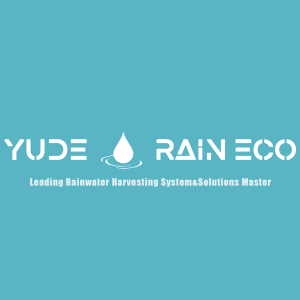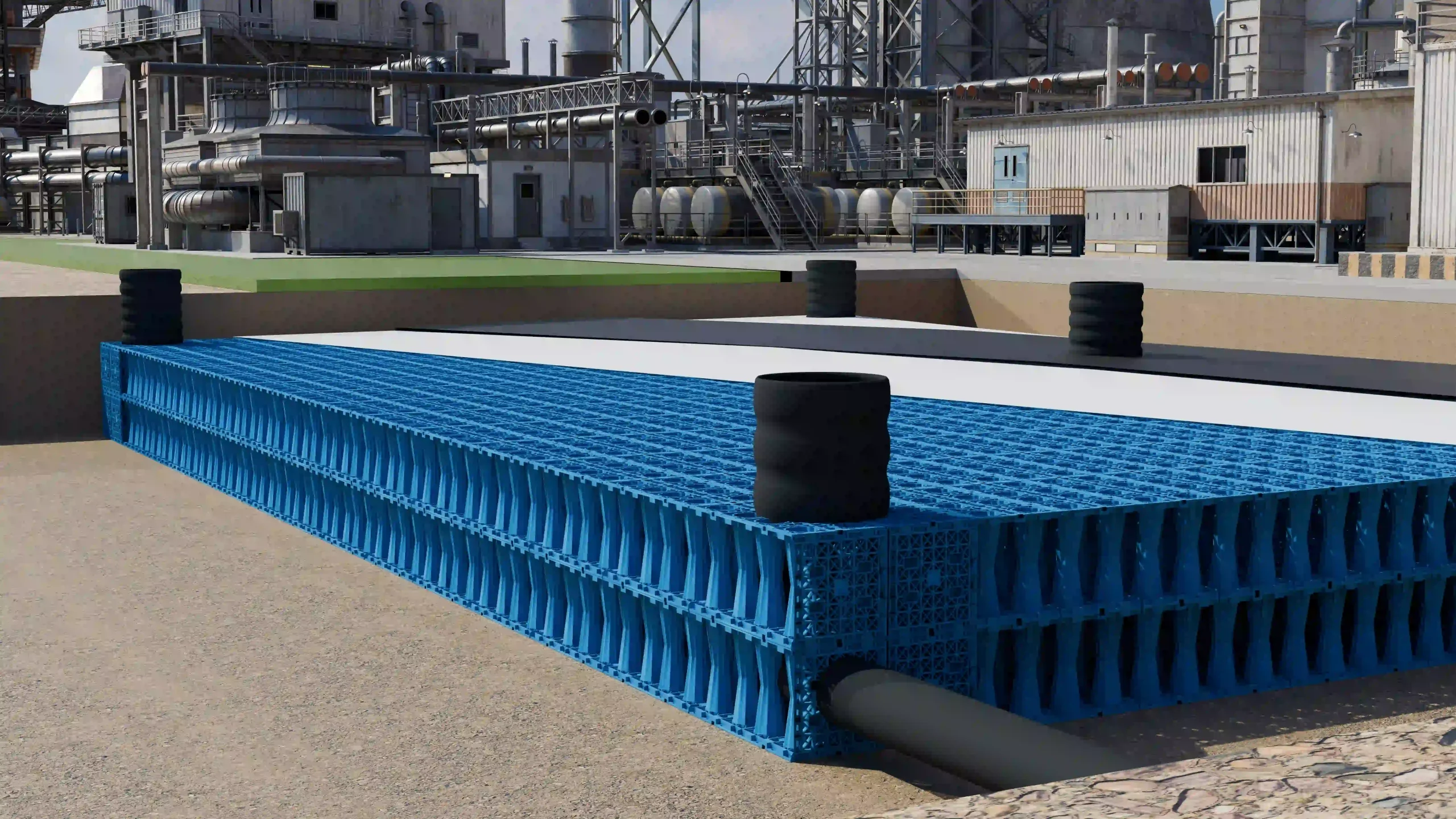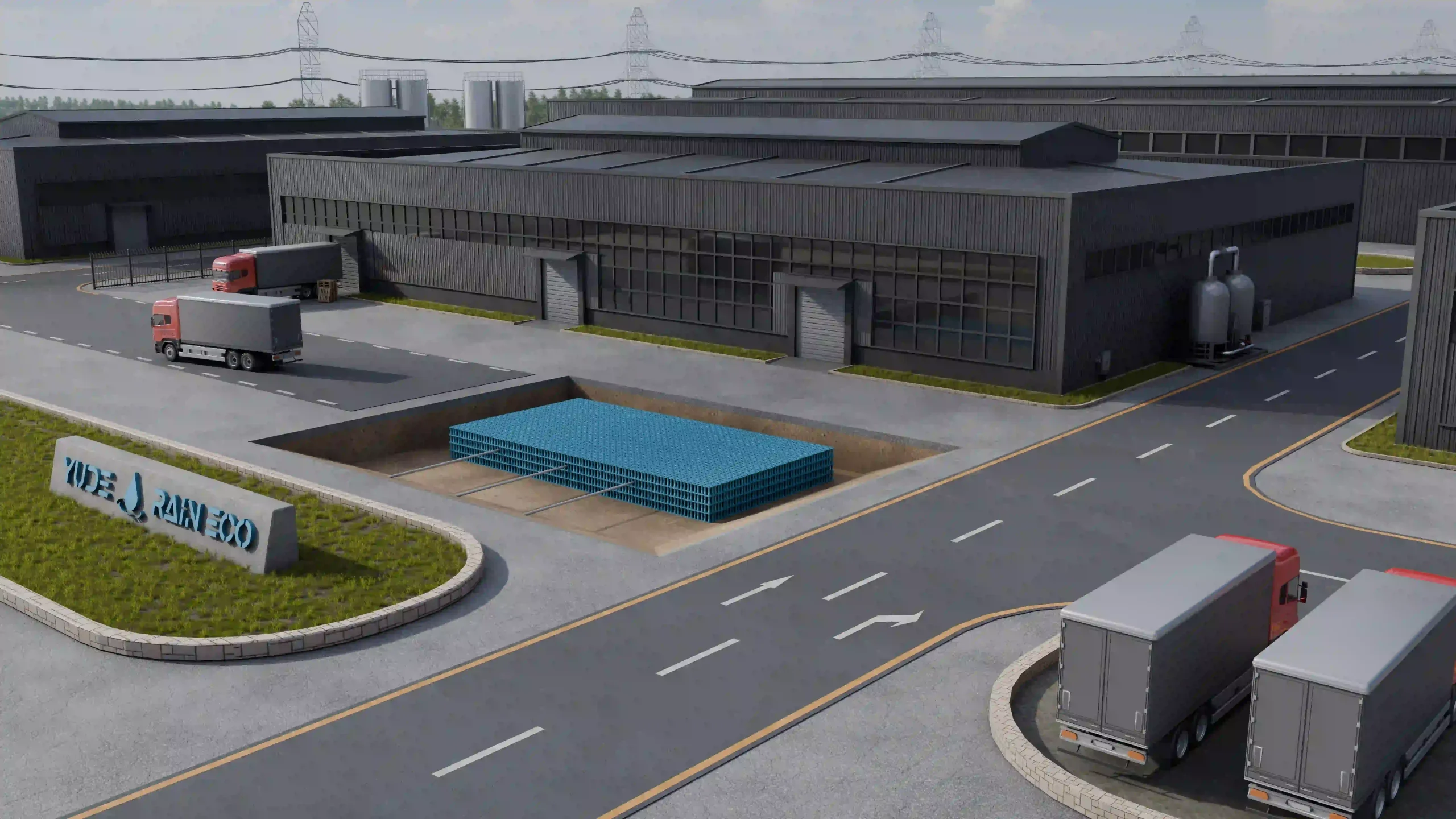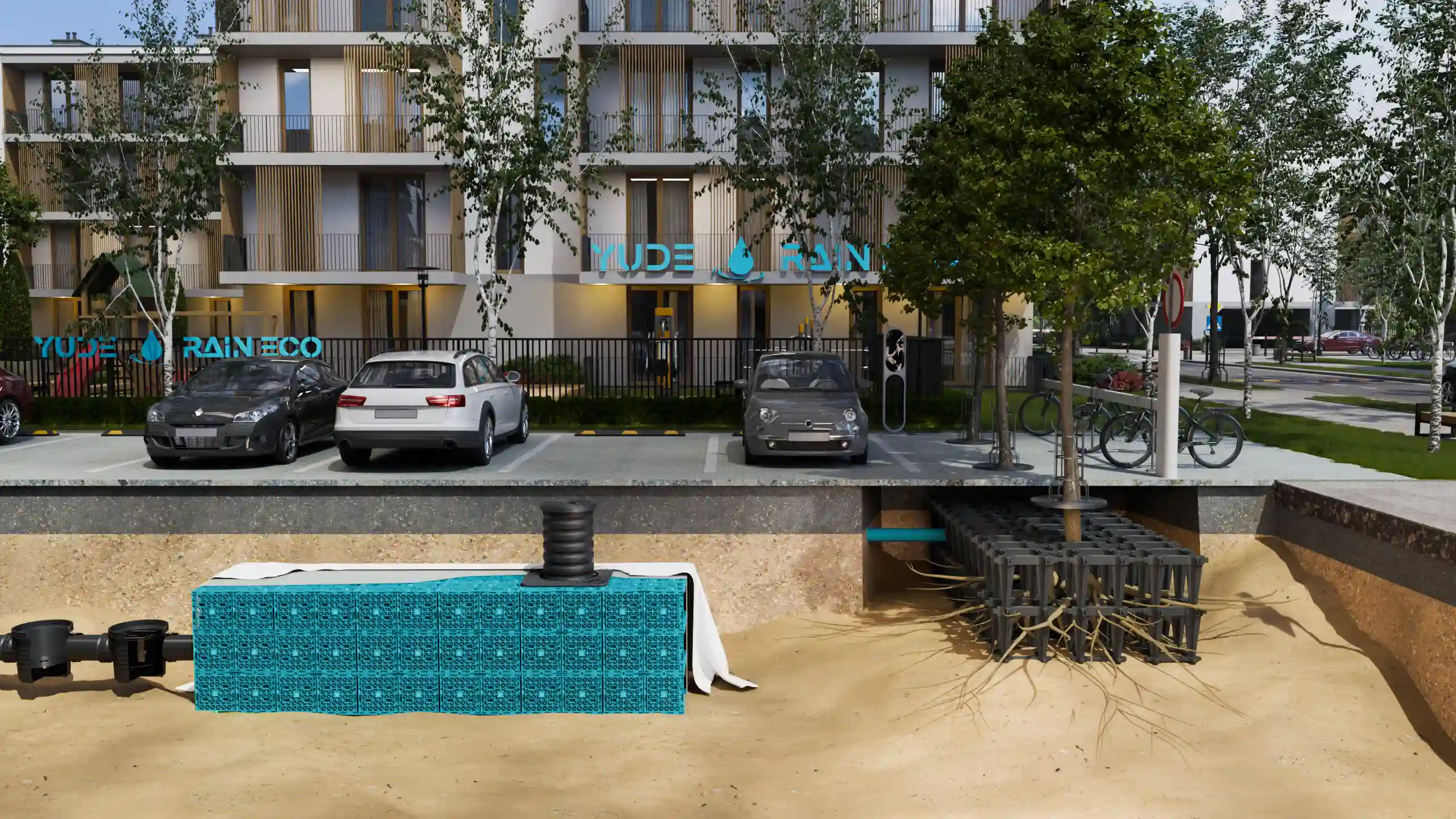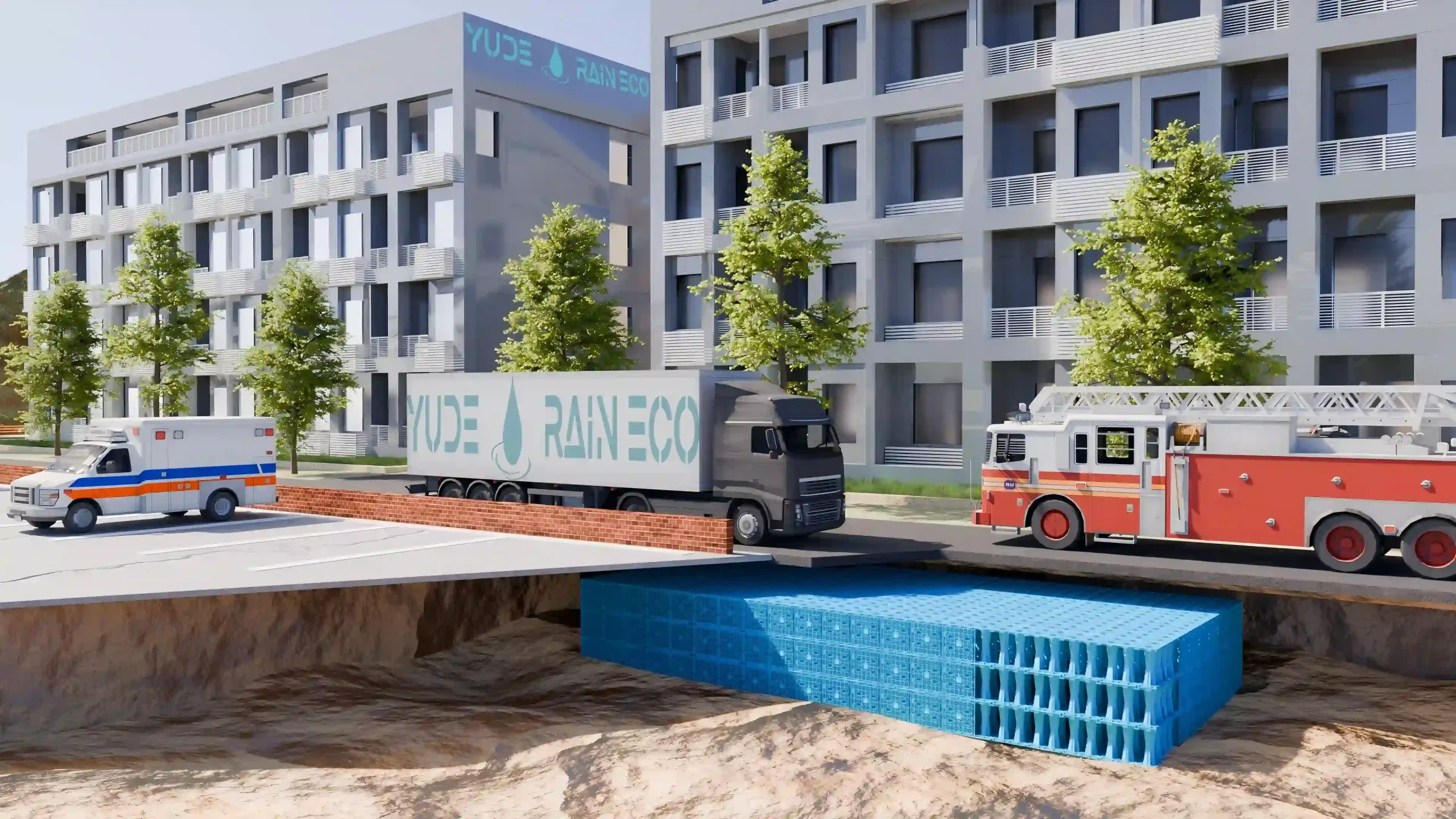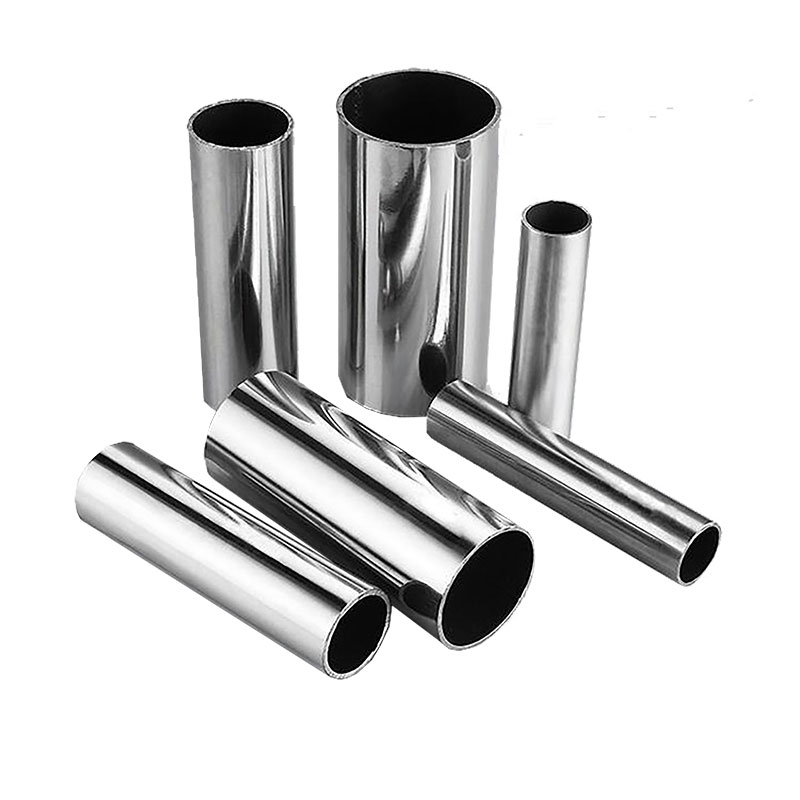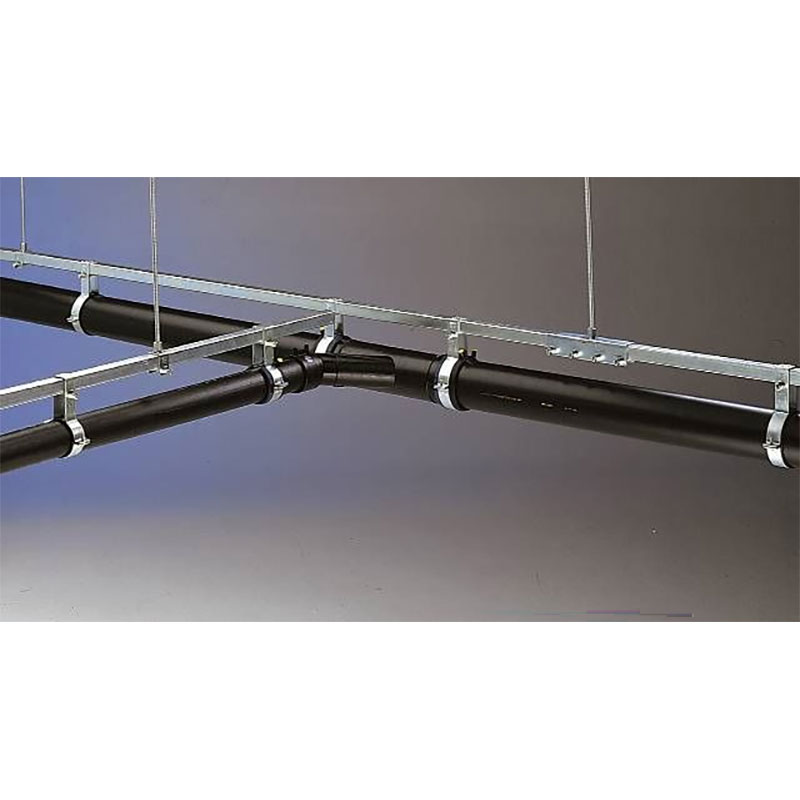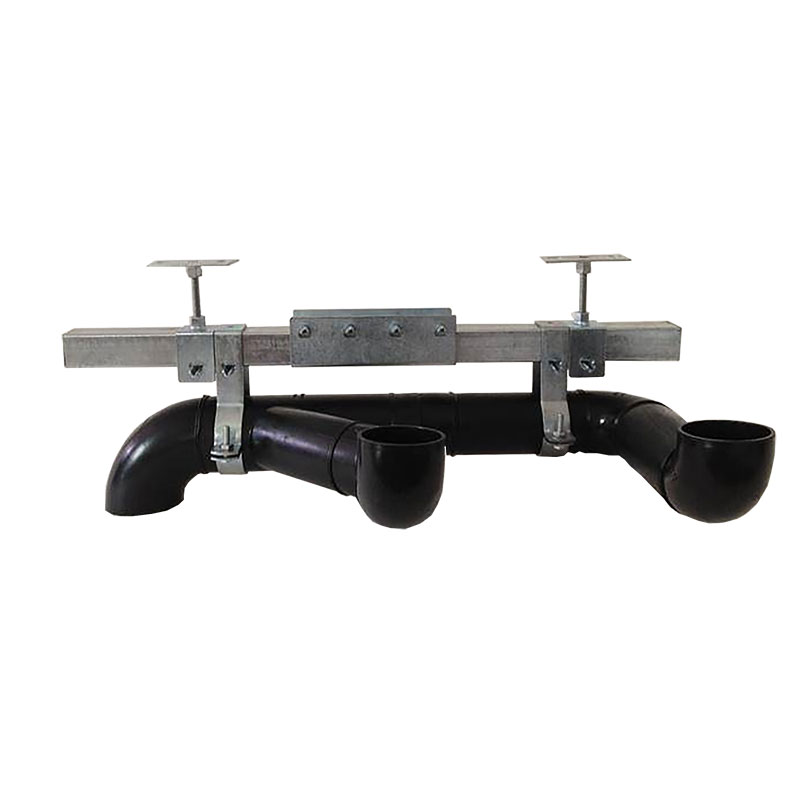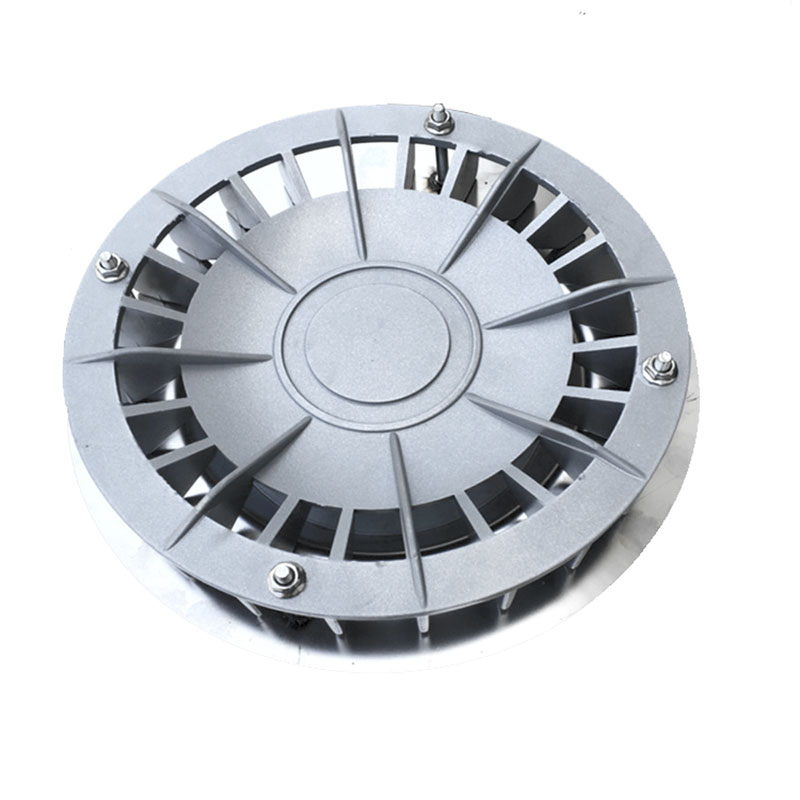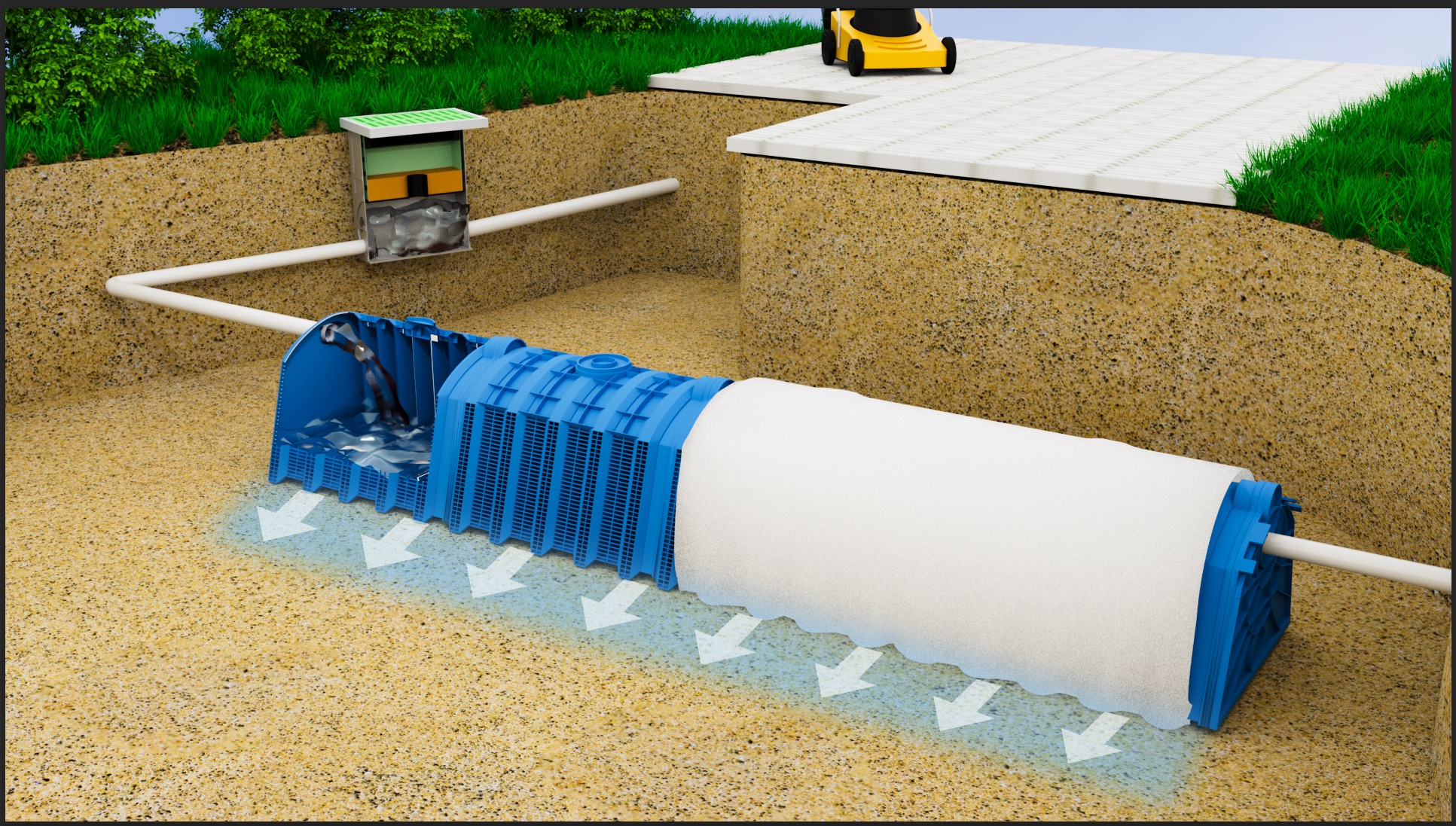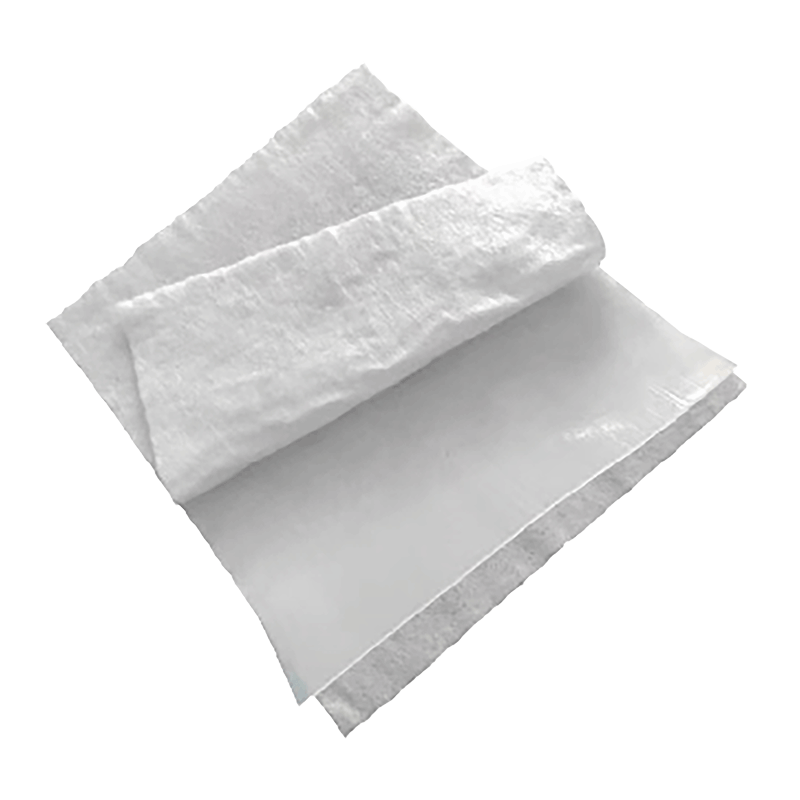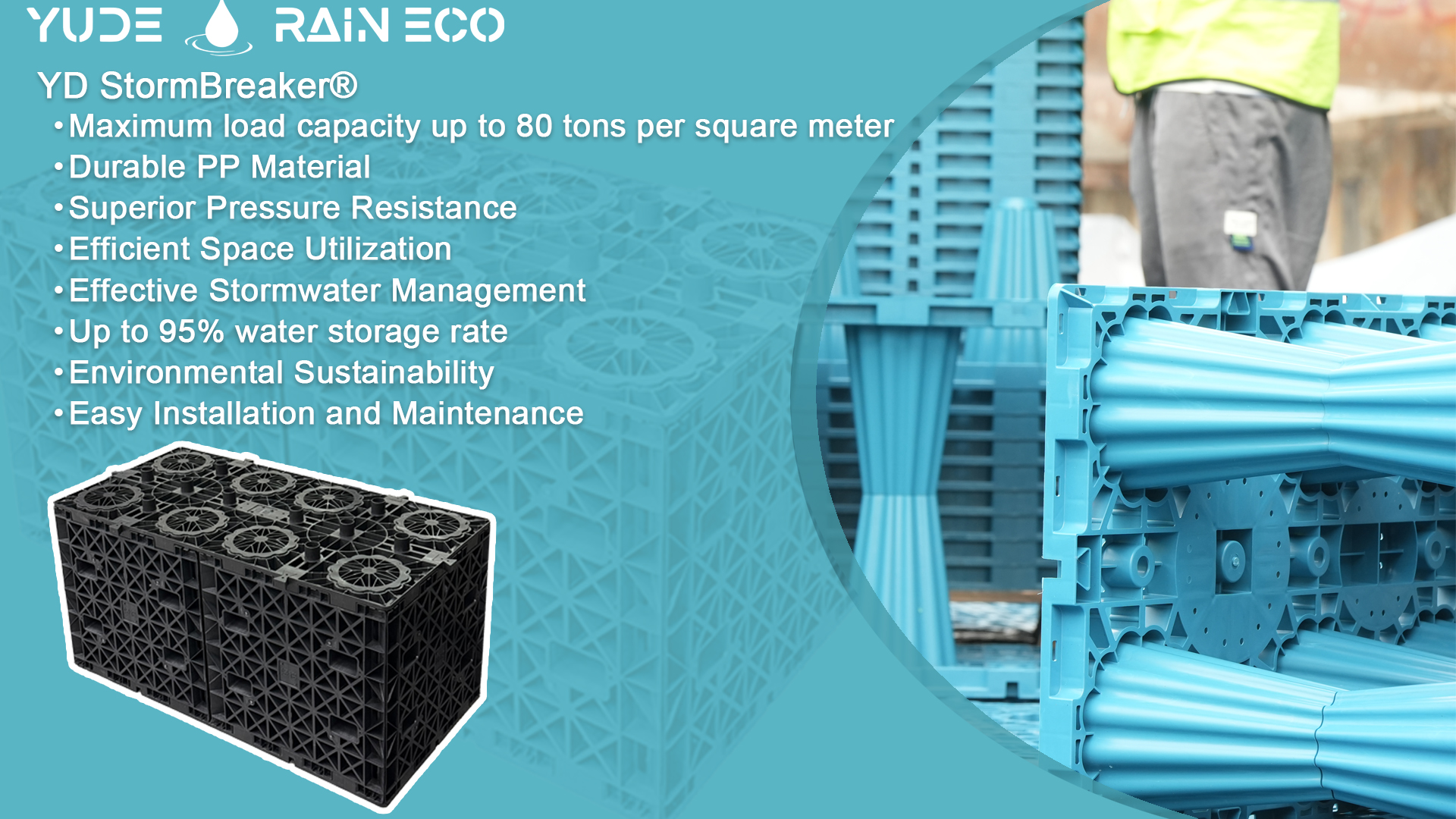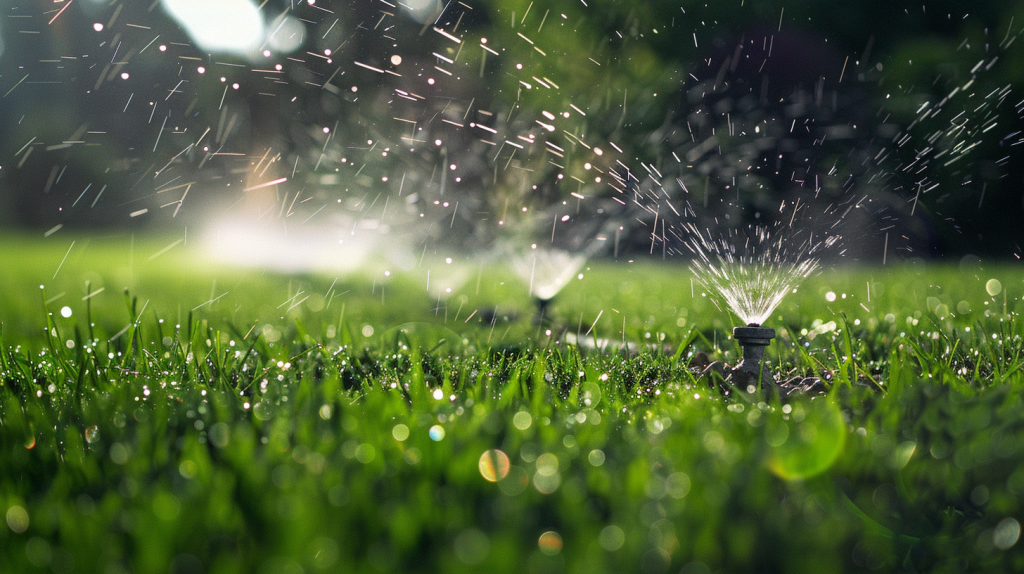Ⅰ. What is Rainwater Harvesting?
Rainwater harvesting refers to the process of collecting, conveying, filtering, storing, and reusing rainwater that falls on rooftops, pavements, and other impermeable surfaces. Instead of letting this water become runoff that floods streets or overloads drainage systems, rainwater harvesting systems capture it for useful purposes, such as irrigation, toilet flushing, industrial cooling, or even groundwater recharge.
It is a sustainable water management technique that reduces dependence on municipal water supplies, cuts water bills, mitigates urban flooding, and contributes to environmental resilience. Modern rainwater harvesting is far more than just collecting rain in barrels—it involves engineered systems designed to match site conditions, water demands, and environmental goals.
Rainwater harvesting can be applied at various scales:
-
Residential: Small-scale systems for gardens and home reuse
-
Commercial: Building-wide systems for reuse and green certification
-
Industrial: Large-volume systems integrated with process operations
As water scarcity and stormwater challenges grow worldwide, rainwater harvesting has become a critical part of sustainable urban infrastructure and climate adaptation strategies.
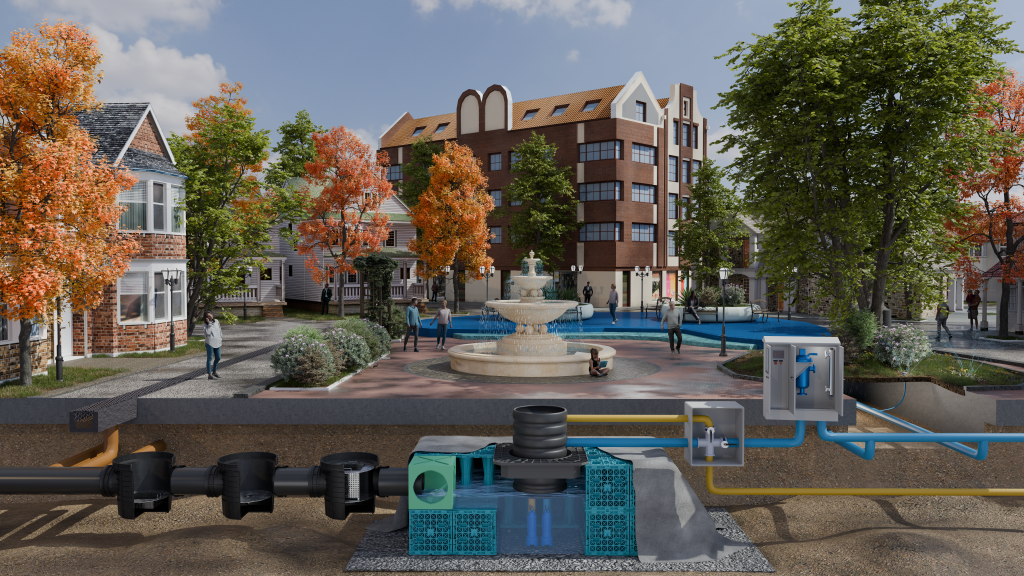
Ⅱ. Where Rainwater Harvesting Works Best — And Why These Sites Need It Most
Rainwater harvesting and attenuation are not one-size-fits-all systems. They are strategic tools tailored for locations where managing surface runoff, improving water efficiency, or complying with regulations are critical. The following are scenarios where rainwater harvesting systems not only make sense but are often essential:
1. Urban Areas with Frequent Flooding
Dense cities with heavy impervious surfaces like concrete roads, rooftops, and plazas produce large volumes of stormwater runoff during rainfall events. These areas benefit immensely from rainwater attenuation systems, which slow down water discharge into public drains, reducing flood peaks and easing drainage infrastructure pressure.
2. Industrial Parks and Warehousing Zones
Sites with vast rooftops and limited green spaces generate high volumes of stormwater. These are ideal for large-scale underground rainwater harvesting systems that both manage runoff and supply non-potable water for cleaning, cooling, or landscaping.
3. Regions with Water Scarcity or Expensive Water Supply
Cities in arid regions or with limited municipal water capacity—such as parts of Australia, South Africa, or the Middle East—can significantly reduce costs by harvesting rainwater for reuse. Even in water-rich regions, rising water tariffs make such systems economically attractive.
4. New Greenfield Developments
From residential compounds to eco-industrial parks, developers increasingly integrate sustainable drainage systems (SuDS) into planning. Rainwater harvesting supports LEED, BREEAM, or local green certification, improving project value and government approval prospects.
5. Public Institutions and Educational Facilities
Universities, schools, and government buildings can harvest rainwater to irrigate landscapes, flush toilets, or run cooling systems—often with public education value tied to visible water-saving infrastructure.
Ⅲ. How Much Rainwater Can You Actually Collect?
The amount of rainwater that can be harvested depends on catchment size, rainfall intensity, and system efficiency. A basic formula helps estimate potential yield:
Harvested Rainwater (Litres) = Roof Area (m²) × Rainfall (mm) × Runoff Coefficient (0.75–0.95)
For example, a 1,000m² roof in a location receiving 1,200mm annual rainfall could collect:
1,000 × 1,200 × 0.9 = 1,080,000 litres/year
= 1,080 m³ of usable water
Even small rooftops in tropical climates can yield surprisingly high volumes. For large logistics or industrial rooftops, volumes may exceed 2,000–5,000 m³/year, depending on seasonal rainfall.
Ⅳ. What Can Collected Rainwater Be Used For?
Rainwater, once filtered and stored, can be used in a wide range of non-potable and:
Non-potable Applications:
-
Toilet flushing in commercial/residential buildings
-
Irrigation of parks, green roofs, or roadside landscaping
-
Cooling systems in data centers and factories
-
Industrial washdowns and equipment cleaning
-
Vehicle washing stations
-
Firefighting reserves
-
Dust suppression in construction sites
Most systems are designed for non-potable reuse, as this avoids costly disinfection and eases regulatory requirements. However, the savings and sustainability impact are significant even without potable conversion.
Ⅴ. Environmental and Operational Benefits of Rainwater Harvesting
Rainwater harvesting is not just about saving water bills—it is a key component of climate-resilient infrastructure.
Environmental Benefits:
-
Reduces runoff pollution: Rainwater that flows over urban surfaces picks up oils, heavy metals, fertilizers, and sediments, which eventually pollute rivers, lakes, and coastal waters. By intercepting this runoff, rainwater harvesting prevents pollutants from entering natural water bodies.
-
Recharges groundwater: Infiltration systems and soakaway crates enable harvested rainwater to percolate into the soil, helping to replenish depleted aquifers and maintain the hydrological balance—particularly in areas suffering from groundwater over-extraction.
-
Relieves freshwater supply stress: By replacing potable water with harvested rainwater for non-potable uses (like irrigation, flushing, and industrial cooling), these systems directly reduce the demand on limited freshwater sources, which are under increasing pressure from population growth and climate variability.
-
Supports biodiversity and habitat health: Reducing uncontrolled runoff and flood events helps protect urban wetlands, restore riparian habitats, and sustain local ecosystems that depend on consistent hydrological conditions.
-
Mitigates urban heat island effect: Rainwater reused for landscape irrigation helps maintain vegetated surfaces, which cool the environment, improve air quality, and enhance urban livability.
Operational and Economic Benefits:
-
Lowers water bills: Buildings and industrial users can offset between 30% to 60% of their water costs by substituting mains water with treated rainwater, depending on their usage profile and local tariffs.
-
Reduces infrastructure burden: During storm events, rainwater harvesting systems attenuate peak flows, which helps prevent sewer overflows, reduce flood risk, and extend the lifespan of municipal drainage networks.
-
Ensures compliance with environmental regulations: In many jurisdictions, stormwater detention or rainwater harvesting is a planning requirement for new developments. Installing compliant systems helps avoid costly delays or redesigns.
-
Increases asset value and market appeal: Green-certified developments that incorporate sustainable water management often command higher property values, lower vacancy rates, and are preferred by environmentally conscious tenants and investors.
-
Enhances water security and operational resilience: For campuses, factories, and public facilities, having a decentralized water source provides backup supply during droughts, utility disruptions, or water quality events, improving long-term reliability.
Ⅵ. How is Rainwater Collected? System Types and Their Applications
There are multiple approaches to rainwater collection. Each suits different site profiles and goals. Common rainwater harvesting methods include:
1. Rooftop Rainwater Collection
-
Typical use: Residential, commercial, institutional
-
Mechanism: Gutters → downpipes → first flush diverter → filter → storage tank
-
Storage: Ground-level or underground tanks
2. Surface Runoff Collection
-
Used in: Car parks, roadsides, sports fields
-
Mechanism: Surface drains or swales → silt traps → filtration → attenuation crates or infiltration tanks
3. Modular Attenuation Systems
-
Ideal for: Urban or industrial sites with limited land
-
Technology: Modular plastic units (e.g. YD StormBreaker®) buried underground
-
Features: High void ratio, load-bearing, stackable, fast installation
4. Rain Gardens and Green Infrastructure
-
For: Small-scale residential, landscape-driven projects
-
Components: Vegetated depressions, biofiltration media, overflow points
5. Permeable Pavements with Sub-surface Storage
-
Used in: Pedestrian zones, car parks
-
Dual function: Rainwater infiltration and water retention underneath
Each method should be selected based on rainfall patterns, water demand, site layout, and whether detention, infiltration, or reuse is the primary goal.
Ⅶ. Residential vs Commercial vs Industrial Rainwater Harvesting: What’s the Difference?
While the core principle of rainwater harvesting—collecting and reusing rainwater—remains consistent across applications, the scale, design, purpose, and compliance requirements vary significantly between residential, commercial, and industrial contexts. Understanding these differences helps stakeholders design systems that are fit for purpose and deliver maximum return on investment.
1. Residential Rainwater Harvesting Systems
Target Users: Homeowners, small apartment complexes, eco-villas, rural households
Common Uses:
-
Garden and landscape irrigation
-
Toilet flushing
-
Laundry (with basic filtration)
-
Car washing
-
Emergency backup water supply
Design Features:
-
Rooftop collection via gutters and downpipes
-
Small-capacity aboveground or underground tanks (1,000–5,000 liters)
-
Basic leaf filters and first-flush diverters
-
Gravity-fed or simple pump systems
-
Often DIY or low-cost contractor installations
Considerations:
-
Lower initial cost and maintenance
-
Usually not subject to strict water quality regulations
-
Can qualify for local subsidies or rain barrel rebate programs
-
Focus on low-complexity and low-volume reuse
2. Commercial Rainwater Harvesting Systems
Target Users: Office buildings, schools, malls, hospitals, residential estates, hotels
Common Uses:
-
Toilet flushing in high-use washrooms
-
Irrigation for large green areas and rooftops
-
HVAC cooling systems
-
Fire suppression reserves
-
Cleaning and maintenance operations
Design Features:
-
Multi-zone rooftop and paved surface collection
-
Mid- to high-capacity tanks (10,000–500,000 liters)
-
Multi-stage filtration (coarse filter + UV or chlorination optional)
-
Pump-based delivery and automated controls
-
Overflow routing to municipal or infiltration systems
-
Integrated with Building Management Systems (BMS)
Considerations:
-
Subject to building codes and green certification standards
-
ROI depends on municipal water cost and usage volume
-
Opportunity for visibility (e.g. “green building” signage)
-
Requires professional engineering design and permits in many regions
3. Industrial Rainwater Harvesting Systems
Target Users: Factories, data centers, warehouses, ports, logistics parks, energy plants
Common Uses:
-
Equipment or vehicle washdown
-
Cooling towers and process water supply
-
Dust suppression
-
Irrigation of large perimeter or buffer zones
-
Firefighting water reserves
-
Pre-treatment for industrial reuse or discharge
Design Features:
-
Extensive catchment areas including rooftops and roadways
-
High-volume tanks and modular underground crates (500–10,000+ m³)
-
Sediment control systems (grit chambers, silt traps)
-
High-performance filters and chemical resistance
-
Pump stations, redundancy systems, SCADA integration
-
Designed for heavy-duty access and load-bearing conditions
Considerations:
-
Regulated discharge permits and reuse compliance
-
Engineering-intensive with hydraulic, structural, and environmental components
-
High-impact on ESG scores, water savings, and operational efficiency
-
Often integrated with larger stormwater management and retention infrastructure
Summary Comparison Table
| Feature | Residential | Commercial | Industrial |
|---|---|---|---|
| Typical Storage Volume | 1–5 m³ | 10–500 m³ | 500–10,000+ m³ |
| Reuse Type | Garden, toilet, washing | Toilet, irrigation, HVAC | Process water, washdown, firefighting |
| Treatment | Basic filters | Multi-stage, optional UV | Advanced, industrial-grade |
| Installation | DIY or small contractor | Civil works with permits | Engineered systems with integration |
| Complexity | Low | Medium | High |
| Maintenance | Minimal | Periodic O&M | Scheduled inspection + reporting |
Ⅷ. Why YudeRainEco’s Systems Stand Out in Real-World Conditions
YudeRainEco provides modular, scalable rainwater harvesting and attenuation solutions backed by engineering know-how and international project experience. Our systems are built for performance, compliance, and ease of integration, even in challenging urban environments.
Structural Integrity
All our geocellular modules, including the flagship YD StormBreaker® series, are tested for heavy-duty load-bearing (up to 60 tons), making them suitable for installation under roads, parking lots, and logistics yards. Modules lock together to form high-capacity tanks with customizable footprint and height.
Maintenance Made Easy
Each system includes integrated inspection ports and optional inspection tunnels, enabling routine maintenance and sediment removal without excavation. Filters are designed for easy access and backflushing, reducing O&M costs over the system’s lifetime.
Flexible to Any Site Plan
Modular design allows for L-shaped, rectangular, multi-depth or multi-compartment configurations. Whether a project needs detention, infiltration or reuse, our engineers customize layouts to match hydraulic goals and civil constraints.
International Compliance
YudeRainEco systems can be adapted to match BS 8515, EN 17152, WSUD, or local codes. We assist clients in securing municipal approvals, LEED/BREEAM credits, and complying with stormwater discharge regulations across Asia, Europe, and the Middle East.
Sustainable Material Use
Modules are produced using recycled polypropylene, with built-in UV and chemical resistance. Lifecycle carbon impact is significantly lower than concrete alternatives, contributing to clients’ carbon reduction and circular economy goals.
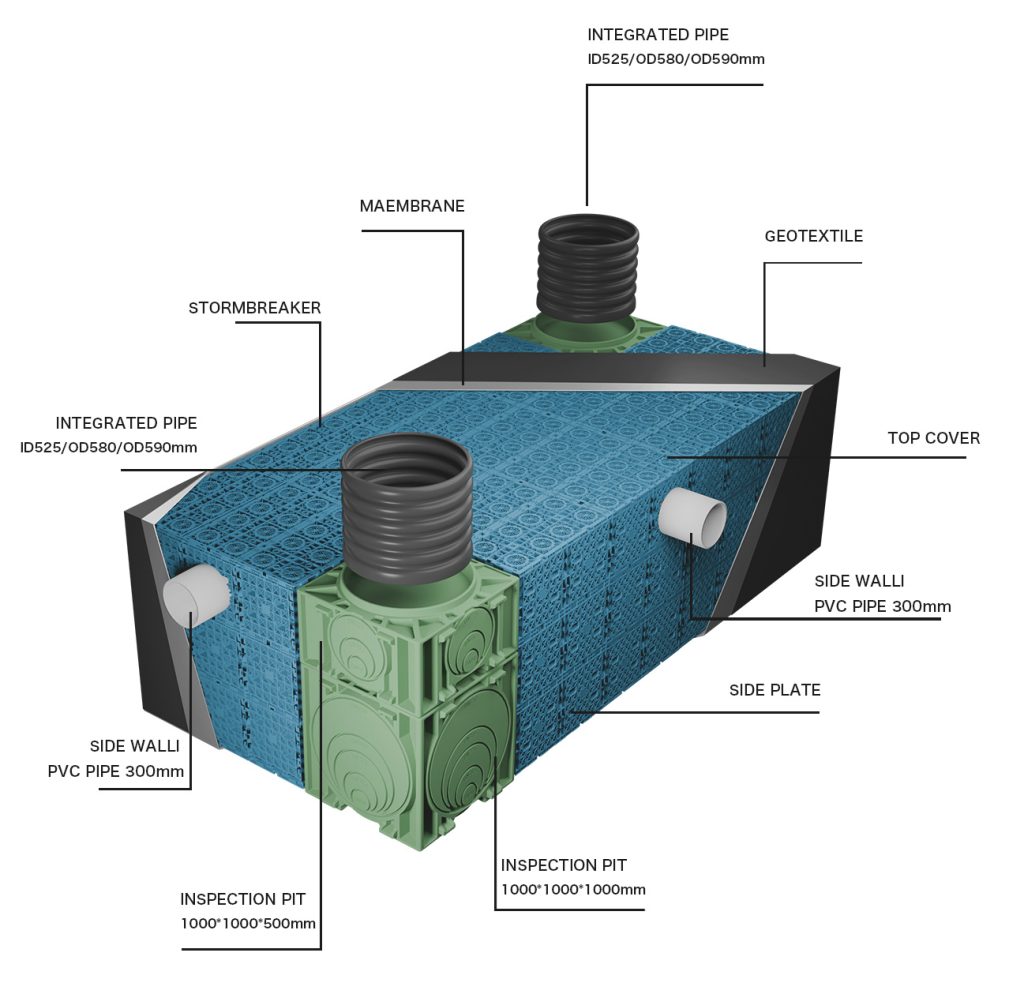
Ⅸ. Common Mistakes in Rainwater Harvesting Projects — and How to Avoid Them
Rainwater harvesting, if not properly designed or maintained, can lead to underperformance or even system failure. YudeRainEco helps avoid common pitfalls such as:
-
Undersized tanks: Failing to account for extreme rainfall events, especially with climate change-induced weather variability.
-
Poor filtration: Leads to sedimentation, pipe clogging, and unpleasant odors.
-
Incorrect reuse routing: Not matching storage type to reuse intent, e.g., using non-pressurized tanks for irrigation systems requiring pump-fed delivery.
-
Inadequate overflow controls: Risk of backup and surface flooding during storms.
-
No maintenance plan: Even the best-designed system fails without periodic inspection and filter cleaning.
Every YudeRainEco project includes site-specific technical calculations, overflow scenarios, and a long-term maintenance guide tailored to the project’s hydraulic and environmental risks.
Ⅹ. The Role of Rainwater Attenuation in Sustainable Drainage Systems (SuDS)
While harvesting focuses on storage and reuse, attenuation plays a key role in stormwater flow regulation. These systems don’t always collect water for reuse; instead, they hold back peak runoff during storms and release it slowly to reduce pressure on city sewers.
YudeRainEco’s attenuation tanks can be:
-
Dry (void tanks): Used purely for detention, typically connected to flow control chambers.
-
Dual-use: Where lower tank levels are reused, and upper layers serve as storm overflow detention.
-
Paired with infiltration crates: Where soil permeability allows gradual aquifer recharge.
In flood-prone or low-lying zones, attenuation is as important as water reuse, offering a buffer that protects public infrastructure and property.
ⅩⅠ. Final Word: Rainwater is Not Waste—It’s a Strategic Resource
As climate pressures mount and urban landscapes expand, one of the most powerful untapped assets flows freely from our rooftops and roads every time it rains.
Whether for flood control, sustainability, water efficiency, or infrastructure resilience, rainwater harvesting and attenuation systems are no longer optional—they are essential.
YudeRainEco stands ready to help cities, architects, and developers turn every drop into long-term value. With proven engineering, modular flexibility, and end-to-end support, we transform rain from runoff into resource—because smarter cities start with smarter water.
FAQ
Q: Can rainwater harvesting be installed in high-rise buildings or existing properties?
Yes. Rooftop collection is common in both new and retrofit buildings. YudeRainEco can provide tank sizing and retrofitting advice for basements, podium levels, or surrounding landscapes.
Q: Does rainwater harvesting save money?
Absolutely. By offsetting potable water usage, especially for large users like parks, factories or campuses, clients often see return on investment in under 5 years.
Q: Is it safe to use rainwater for drinking?
Only if treated with appropriate filtration and disinfection (e.g. UV, membrane). For most commercial cases, non-potable use is more economical and regulatory-friendly.
Q: How long does it take to install a modular system?
Installation time depends on volume and complexity. A typical 500 m³ underground modular system can be installed within 4–7 days with the right preparation.
Q: What is the lifespan of a modular system?
Our PP-based modules have a life expectancy of 50+ years when installed and maintained properly.
Take the Next Step in Sustainable Stormwater Management
Yude Rain Eco offers complete design, supply, and support for soakaway, detention, and attenuation systems tailored to your site’s conditions. With proven expertise and globally certified systems, we help you comply with local drainage regulations, reduce environmental impact, and lower long-term water costs.
Book a free consultation with our engineers today to receive a custom rainwater system layout and performance estimate.

